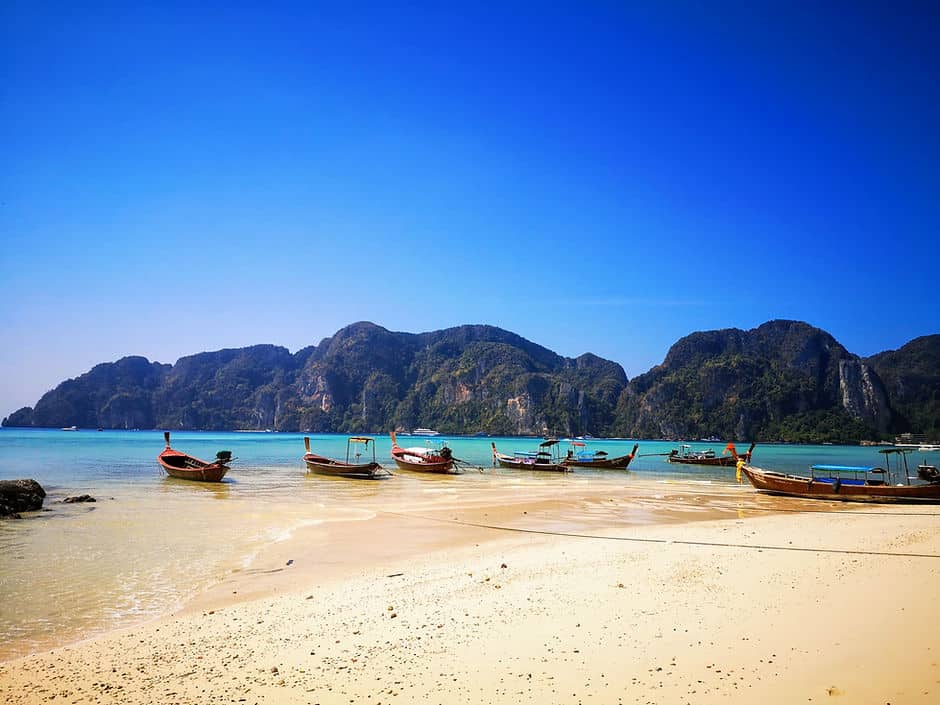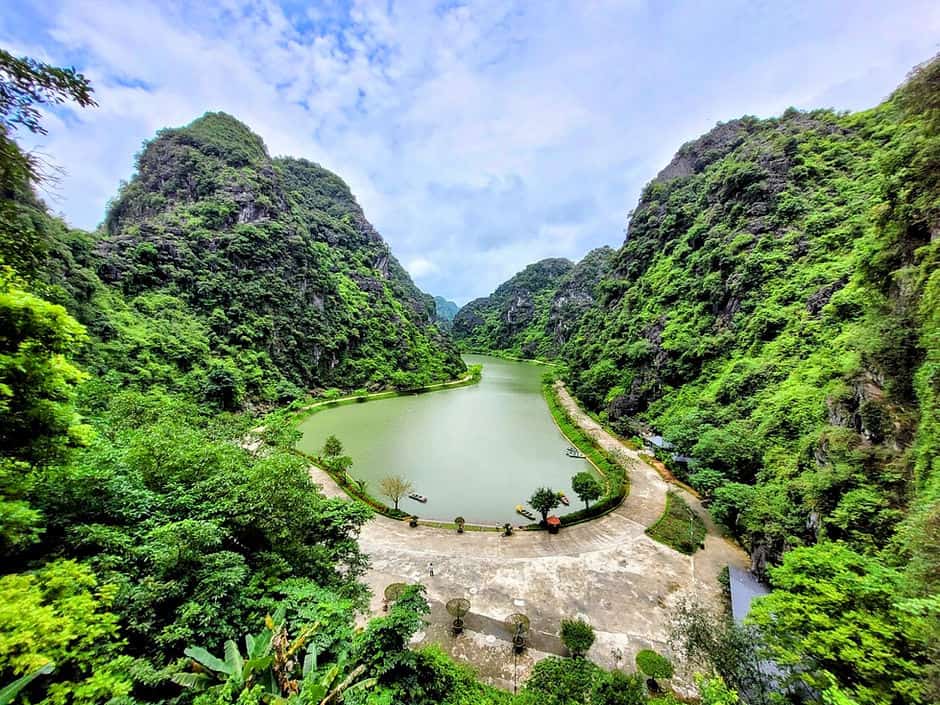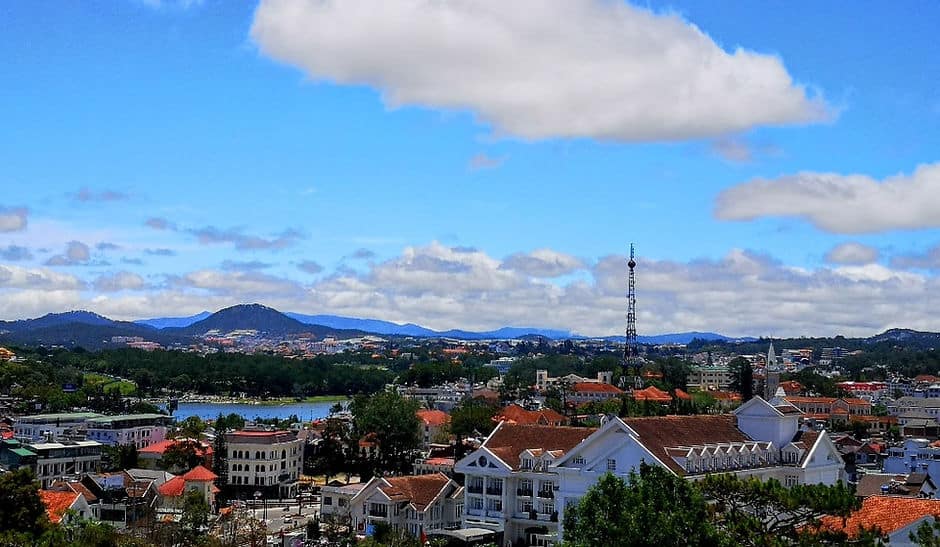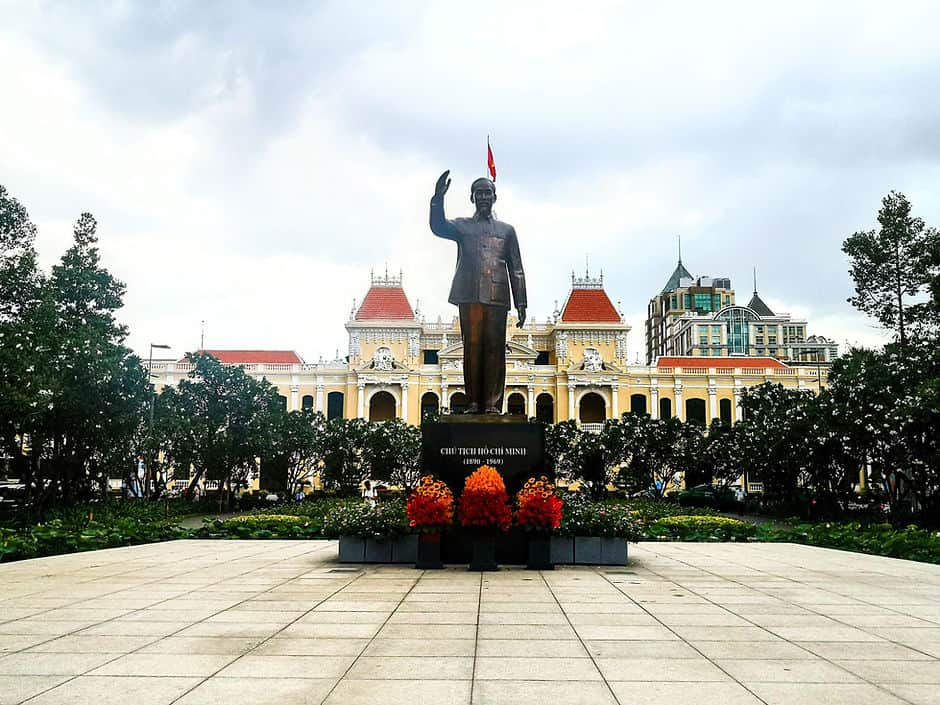
This post may contain affiliate links. I will receive a small commission if you use these links.
If you’re planning a trip to Vietnam, you may be wondering whether it is worth visiting Ho Chi Minh City (HCMC). And, if so, what are the best things to see and do in Ho Chi Minh?
Vietnam’s largest city is located in the south of the country. The modern, busy city is often the starting point for many trips in Vietnam, thanks to its large international airport. But rather than just using the city as a transit route from which to travel to the rest of Vietnam, I would highly recommend spending a few days in Ho Chi Minh City to explore.
Table of Contents
Best things to do in Ho Chi Minh City - A 3 day itinerary
I spent 3 fun-filled days in Ho Chi Minh City during my month-long trip to Vietnam. After spending the previous months enjoying the slow pace of island life on Koh Samui, Thailand, the busy city life was a shock to the system when I first stepped off the plane! However, once I had readjusted to traffic, skyscrapers and bright lights, I had a great time here. And, there are some amazing things to do in Ho Chi Minh City to add to your Vietnam bucket list!
Where to stay in Ho Chi Minh City?
Before we look into my 3 day itinerary, a good place to start is to understand where the main sights are within the city. Ho Chi Minh City is divided into 24 districts, and the main, central ‘downtown’ area is district 1. Chances are, if you’re only in the city for 2-3 days, this is where you will spend most (if not all) of your time.
The other central districts include district 2, which is popular with Western expats. District 3, where the War Remnants Museum is located. And district 5, which is Chinatown.
If you are only spending 2 or 3 days in HCMC, the best area to stay in is district 1. There is such a large range of accommodation here, and you can filter your search results by district if you use booking.com, which is handy to narrow the search results. Just be aware that the rooms can be quite small in HCMC, as with most busy cities.
Each district is made up of several neighbourhoods (also known as wards). Below are three of the main neighbourhoods in district 1, in which many of the main sights are located:
Ben Thanh
In the centre of this neighbourhood is the Ben Thanh market – great for sampling local food and picking up some clothes or souvenirs. Also in this area is the Reunification Palace and Tao Dan park. For spending the evening in Ben Thanh, there are upscale rooftop cocktail bars and trendy hangouts serving craft beers.
Ben Nghe
This neighbourhood is populated with beautiful historic French-colonial style buildings, such as the Opera House, Notre Dame Basilica and HCMC museum. You will also find the Nguyen Hue Walking street in this neighbourhood, which is a great place to visit day and night. There are plenty of restaurants in this area and if you’re looking for a party vibe in the evening, there are also several upscale cocktail bars and high end nightclubs here too.
Pham Ngu Lao
Popular with backpackers, this area is known for the famous Bui Vien Walking street, with loud nightclubs and lively bars spilling out onto the street. You’ll find local street vendors and traditional home-style Vietnamese cooking here. During the day, pick up a Bahn mi and head to the leafy September 23rd park to enjoy a picnic.
How long do you need in Ho Chi Minh City?
As I mentioned, I spent 3 days here and I felt that was a good amount of time to see the main sights in the city. It also left me with enough time to tick everything else off my list of places to visit throughout Vietnam.
Of course, it is a large city and in 3 days you will only really get to cover the main sights in the central district. If you have longer to spare, you can explore further out to the surrounding districts, as well as taking a couple of day trips.
However, if you want to find out some of the best things to see and do in Ho Chi Minh City in 3 days, keep reading!
Ho Chi Minh City 3 day itinerary
Day 1 - Explore the city with a DIY walking tour!
On your first day in Ho Chi Minh City, go and explore! The best way to see the city is by walking. Although, be careful when crossing the roads! The traffic in Ho Chi Minh City is hectic! It’s busy, loud and fast and there are literally thousands of scooters on the roads (and pavements!). Take extra care and try to cross at designated crossings. (Although, be warned that traffic doesn’t always stop at the crossings either!). If you are not able to walk, there are plenty of taxis, motorbike taxis and local buses you can take to get around to the main sights.
Here’s some of the best places to visit on your first day exploring Ho Chi Minh City:
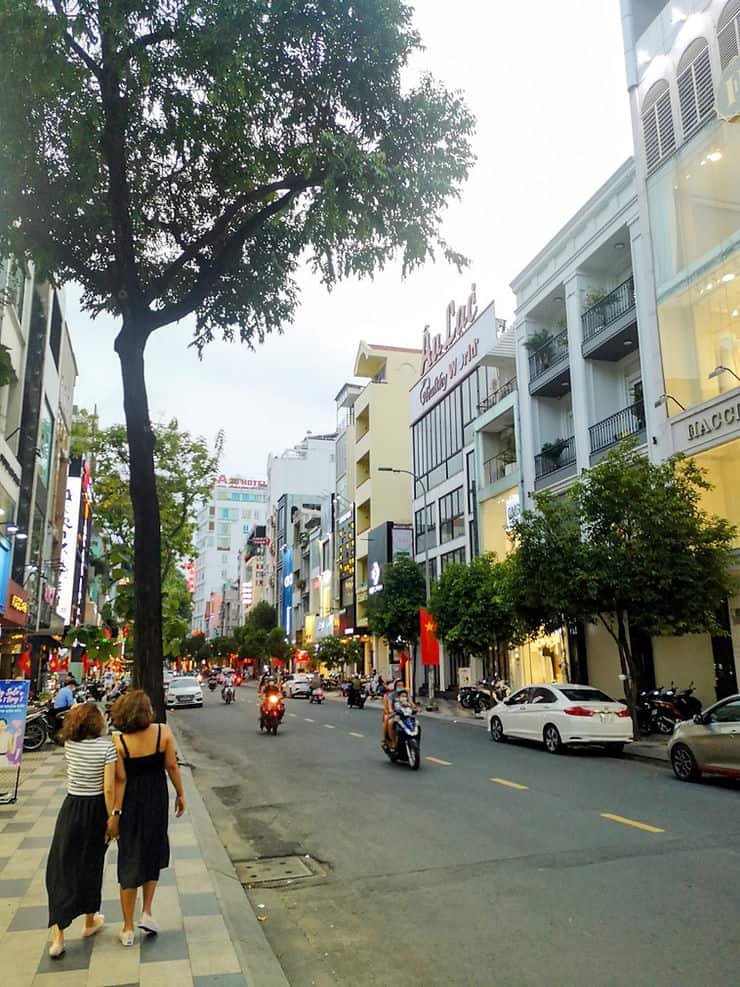
Morning itinerary
1. Ho Chi Minh City museum
Start your day at the Ho Chi Minh City museum. This is a small museum and you will only need about 1 hour here, but it gives a good overview of the history of Ho Chi Minh City and there are several exhibitions displaying artefacts and memorabilia. It is also a popular spot for photo shoots due to the French-colonial architecture of the building. Entrance is 30k vnd (£1), but you will be charged extra if they see you taking photographs with a professional-looking camera.
2. Ho Chi Minh City Hall
Next to the Ho Chi Minh City museum is the Ho Chi Minh City hall (or Hotel d’Ville as it was known during the French-colonial period). The government office building now houses the Ho Chi Minh City People’s Committee. Although the building is not open to the public, the outside is beautifully decorated and it is worth stopping by to admire the architecture.
3. See the Ho Chi Minh Statue
In front of the city hall is the statue of Ho Chi Minh. The statue is at the top of the Nguyen Hue Walking street and is a great focal point and photo spot. This spot is also very beautiful at night when the statue and city hall are both illuminated.
4. See the Ho Chi Minh City Opera House
Just off Nguyen Hue street, you will see the Ho Chi Minh City Opera House. Symphonies, ballets and opera performances are shown here. The impressive building is another beautiful example of French-colonial architecture in the city, and even if you don’t visit a show, the building is great to admire from the outside.
5. Stroll down Nguyen Hue Walking Street - (This is a good spot to stop for lunch)
Nguyen Walking Street is a pedestrianised promenade that links the City hall with the Saigon River. There are plenty of benches along the tree-lined promenade to sit and stop for a rest and watch the world go by. This is also a great place to stop for lunch, as there are plenty of cafes and restaurants on either side of the promenade.
6. Visit the Cafe Apartments - (This is a good spot to stop for lunch)
The Cafe Apartments are one of the most popular attractions in Ho Chi Minh City, and another great option for a lunch stop! Businesses, cafes and shops are housed in an old apartment block creating a unique and fascinating place to visit and photograph.
The entrance to the Cafe Apartment building is not very obvious. You will need to go through the underground parking area, just off the road and head towards the elevator and a set of stairs. If you want to take the elevator, you have to pay the man sitting on the stool opposite! If you can, it is best to take the stairs anyway as you can have a look at the shops and businesses on each floor.
One of the most popular (and instagrammable!) places to visit in the Cafe Apartments is Dosh donuts. Not only are their donuts delicious but they also have great milkshakes, smoothies and coffee. Grab a seat outside for a great view of Nguyen Hue walking street!
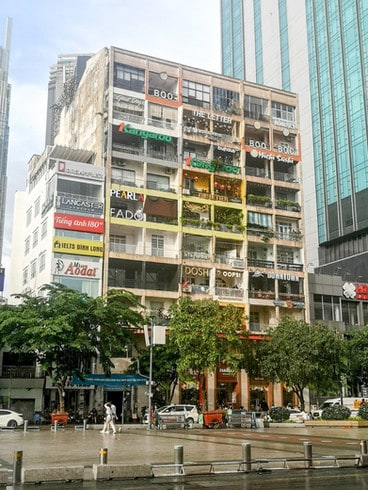
Afternoon itinerary
7. Stroll along the Saigon River
At the end of Nguyen Hue Walking Street is the Saigon River. If you can cross the busy road, this is a nice spot to walk off your lunch. The waterfront path is not too long, but the gardens are well maintained and it is nice to have a stroll here. There are also local water taxis and boat trips you can take from the boat station here.
8. Visit the Saigon Skydeck
Close to the riverfront, the 68 floor Bitexco Financial Tower has an observation deck with panoramic views of the Saigon River and city. The skydeck is open from 09.30am – 09.30pm and the entrance ticket costs 200k vnd (£7) per adult. There is also a small mall with shops and restaurants open to the public within the tower.
Evening itinerary
9. Head to Ben Thanh ward for dinner
There are lots of great places to eat in Ho Chi Minh City and it can be a bit overwhelming knowing where to go. Ben Thanh ward has a good mix of everything to suit all budgets, so it’s a good area to spend your first evening in Ho Chi Minh City. Lý Tự Trọng street is a great place to go if you want to spend your night sipping cocktails or visiting a craft beer bar. There are also several restaurants around here that serve both Western and Vietnamese food. If you are on a budget, head to one of the local street stalls and try some local noodles or Pho.
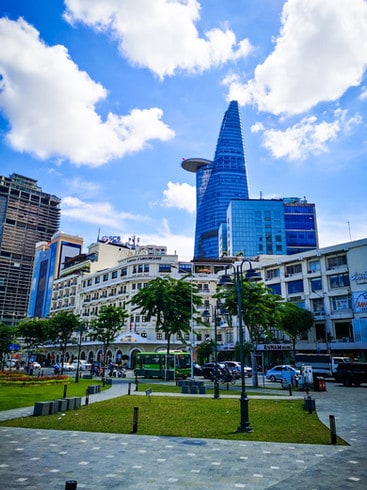
Day 2 - Learn about Vietnam's history and culture
On your second day in Ho Chi Minh, take the morning to learn about Vietnam’s recent history. Then in the afternoon, get stuck into the city’s culture by trying some local food and exploring the local markets.
Morning itinerary
10. The War Remnants Museum
Although it is one of the most visited sights in Ho Chi Minh City, the War Remnants Museum is quite a sombre place. In honesty, it was tough-going for me at times to read some of the stories and see some of the photographs on display. However, it is incredibly informative and you can learn a lot about the American-Vietnam War here. Entrance is only 40k vnd (£1.70), which is incredibly good value for the amount of information that is displayed here.
Outside of the museum, there are several planes and tanks on display, as well as an exhibition that shows you the ‘tiger cages’ that prisoners were kept in as part of the torture they were subjected to. Inside the museum, there are three floors of exhibits. Start on the third floor in room 1, and work your way down the floors to room 11 to follow the timeline of the war.
Some of the photographs are quite graphic which were not at all pleasant to see, but it really does bring to life how brutal the war was. You will need about 2 hours in the museum, depending on how in-depth you want to read the information on display. Although the museum is quite a sobering experience, it is important to learn about the history of the country you are visiting.
11. Visit the Reunification Palace
The Reunification Palace (or Independence Palace as it was previously known), is one of Ho Chi Minh’s most visited attractions, alongside the War Remnants Museum. Inside the government building, visitors can access the basement where there is a bomb shelter, war command room and a telecommunications room. There are also many artefacts and materials from the war era on display, as you make your way through the building. The entrance fee is 40k vnd (£1.40) per adult and you will need to visit before 13:00 as it’s closed to the public after this time.
Afternoon itinerary
12. Relax in Tao Dan Park
Behind the Reunification Palace is the large, leafy Tao Dan park. The landscaped gardens are an ideal place to reflect and take a moment after visiting the museum. There’s also a small Buddhist temple and a children’s play area, making it a nice, serene place to spend the afternoon in Ho Chi Minh City.
13. Try some local food in Ben Thanh Market
Ben Thanh has the second largest indoor wet market in Ho Chi Minh City and there are several street food stalls selling noodles, pho and other local dishes. Stop here for some lunch or to pick up some local produce.
If you don’t fancy eating in the market, or just want somewhere a bit quieter, there are plenty of restaurants and cafes close to the market, around the streets of Lê Thánh Tôn and Lý Tự Trọng in Ben Thanh ward.
14. Go shopping in Ben Thanh Market
In addition to food, there are also plenty of stalls selling clothes, shoes, and souvenirs here. After lunch, head back to the shopping area within the market and have a browse. Just note that this market can get very busy and the spaces between the stalls are narrow. Some of the stall owners can be a bit pushy – we even experienced a couple of people trying to grab our arms. I didn’t feel unsafe at all, but just be sensible and careful with your belongings and keep your bag on your front, where you can see it.
Evening itinerary
15. Watch the world go by at Thanh Giong Monument
Thanh Giong Monument sits in the centre of a busy roundabout / intersection in the centre of Ben Thanh ward. The traffic here is crazy, especially at the end of the working day. All around the edge of the intersection there are tall buildings housing coffee shops and cafes on multiple floors. Grab a coffee and find a spot outside on one of the upper floors and just watch the traffic. It sounds like a strange thing to do, but it really is fascinating and quite fun to watch the organised chaos taking place on the roads below!
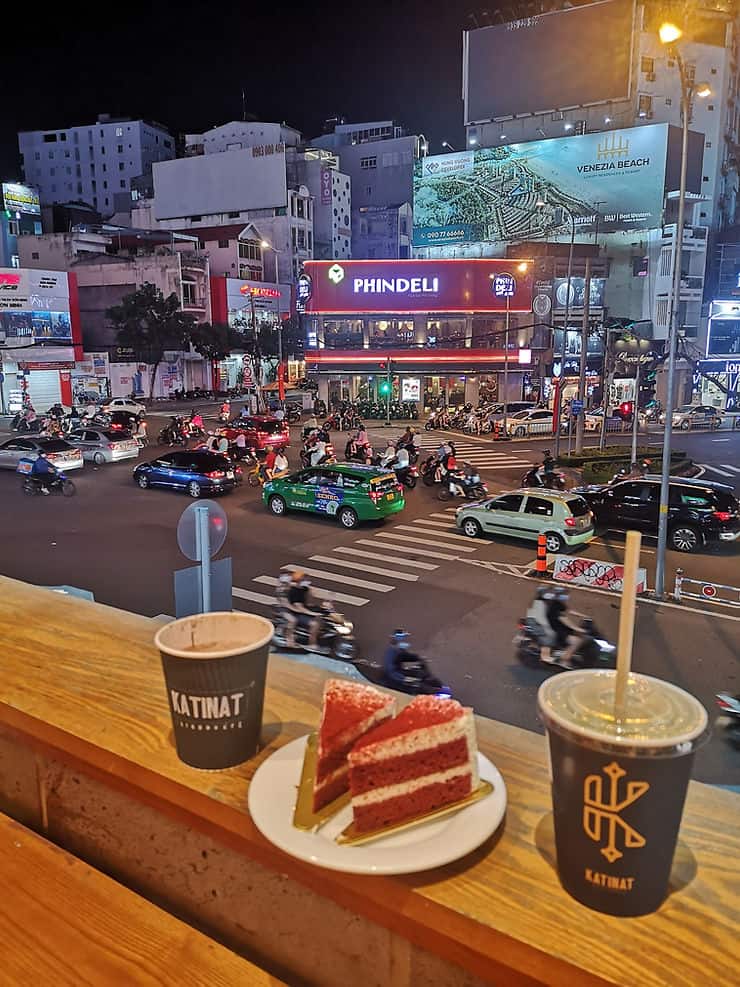
Day 3 - Visit the Cu Chi Tunnels
There are so many great day trips you can take from Ho Chi Minh City. One of the most popular is the Cu Chi Tunnels. However, if you don’t fancy that, you could also choose a trip to the Mekong Delta or Cat Tien National Park in the south of Vietnam.
16. The Cu Chi tunnels
The Cu Chi Tunnels are located 2 hours outside of Ho Chi Minh city centre. (Although with traffic, you can expect this to be a slightly longer journey time, especially on the weekends and during holidays). The best way to see the Cu Chi Tunnels from Ho Chi Minh City is by booking a tour. The tour we went on was with Vietnam adventure tours, which I booked through Viator and it was really great. Our tour guide was really informative and despite the sombre history, he managed to keep the trip entertaining and light-hearted with little anecdotes and humour.
If you are not familiar with the Cu Chi Tunnels – they are a series of underground tunnels which were used by the Vietnamese soldiers in the American-Vietnam war. They were instrumental in the Vietnamese fight against American troops in this region.
What to expect when visiting the Cu Chi tunnels
During your visit to the Cu Chi Tunnels, you will see and learn how Vietnamese soldiers lived underground in the tunnels. Each tunnel was connected by a series of small ‘rooms’ and trapdoors. Some of the tunnels were so small, they had to lie flat on their stomachs and shuffle through them! Seeing the tunnels for yourself really is mind-blowing. How they lived in the small, confined spaces with no daylight is incredible. It is strange to think that a site of such brutality and conflict is now one of the biggest tourist attractions in Ho Chi Minh City. However, the experience is very informative and helps bring to life part of Vietnam’s history during this time.
A short section of the tunnels has been expanded specifically for tourists to experience what it might have been like for the soldiers. The shortest section of tunnel is 20m long and this is the largest, so you are able to squat or crouch down here. Despite the fact that the tunnels have been enlarged and lighting has been added, they are still very hot and if you suffer from claustrophobia I wouldn’t recommend going into the tunnels. However, this is only a very short element of the trip and you will still gain a lot from visiting the tunnels even if you skip this part.
During your tour of the tunnels you will also see various traps that were used by Vietnamese soldiers and you can even have a go at shooting a gun on the firing range.
Evening itinerary
17. Experience Bui vien walking street
In the evening, head to Bui Vien walking street. Bui Vien is known as being one of the liveliest areas of Ho Chi Minh City at night. There’s nightclubs, bars and plenty of local, cheap restaurants along this short street, and in the surrounding area. It has a similar feel to Bangkok’s Khao San Road in Thailand or Pub Street in Siem Reap, Cambodia and is very popular with backpackers. Even if you don’t want to drink here, it’s worth a walk down earlier in the evening to see the sights and take in the atmosphere!
17. OR, Enjoy an evening in Ben Nghe
If the rowdy nightclubs of Bui Vien Walking street are not your cup of tea, head to Nguyen Hue Walking street and the area around it in the neighbourhood of Ben Nghe. This area is another great place to spend the evening in Ho Chi Minh, with plenty of western and local restaurants as well as rooftop bars and small bistros.
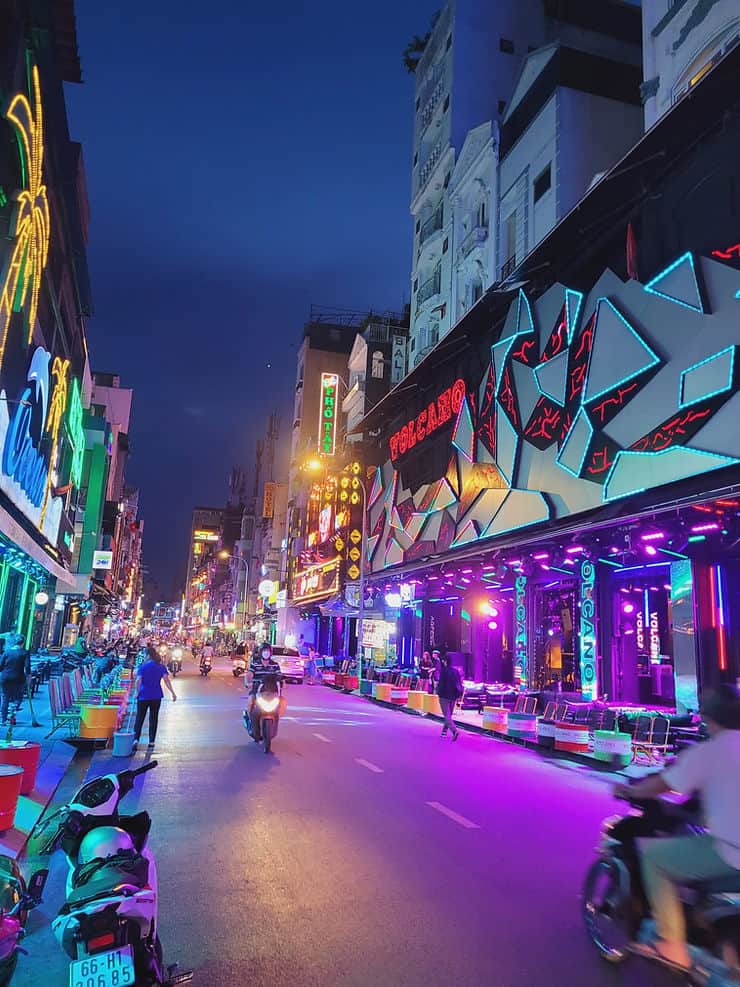
When is the best time to visit Ho Chi Minh City?
In terms of weather, Ho Chi Minh City is generally warm all year round, but the best time to visit Ho Chi Minh City is between December and April. During this time, the rainfall is at its lowest. There’s also less domestic tourism between these months, so it can be less busy. If you want to experience the Tet Lunar festival (Vietnamese new year), this usually falls at the end of January or early February. Rainy season in Ho Chi Minh City is between May and November. If you’re travelling during these months, don’t forget to pack your raincoat as there will be rain showers almost every afternoon. Try to avoid visiting in October when there can be monsoons and flooding.
Which is better - Hanoi or Ho Chi Minh City?
When planning a trip to Vietnam, many people will either fly into Ho Chi Minh City in the south or Hanoi in the north. So, which is better? Hanoi, or Ho Chi Minh City?
Ho Chi Minh City and Hanoi are quite different, so comparing the two cities is tricky. If you have time, I would see them both, travelling from south to north, or the other way round. However if you are only staying in Vietnam for a short amount of time, then seeing them both may not be possible due to the distance between them. If this is the case, it really comes down to which part of Vietnam you are most interested in.
Hanoi is in the north of Vietnam and is more traditional than Ho Chi Minh City, with its historic Old Quarter, traditional buildings and local markets. The north of Vietnam is much more mountainous than the south and has beautiful landscapes. Hanoi is perfectly positioned to visit the region of Sapa, in the far north of the country, as well as the famous Halong Bay and the region of Ninh Binh. If you like being outdoors, surrounded by rolling hills and beautiful scenery, then north Vietnam may be more suited to you.
Ho Chi Minh City is much more modern than Hanoi. This is largely due to the fact that Saigon, (as it was formerly known), and the south of Vietnam, was heavily bombed during the American-Vietnam war and these areas have since been rebuilt. In Ho Chi Minh City, you’ll find skyscrapers and modern restaurants, fast food chains, and shopping malls with well known fashion brands.
Ho Chi Minh City is a great starting point for travelling in the south of the country and along the coast. From here you can easily visit the beach towns of Mui Ne and Nha Trang. As well as the beautiful unesco heritage town of Hoi An, and the mountain resort of Dalat. Getting around Vietnam is really straight forward too and great for those travelling Vietnam on a budget, with lots of overnight sleeper buses and trains!
So, in answer to the question, is Ho Chi Minh or Hanoi better? Well, it really depends on two things: 1. What do you prefer – modern or traditional? And 2. What other places in Vietnam are you planning on visiting?

